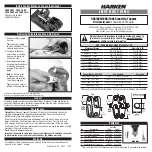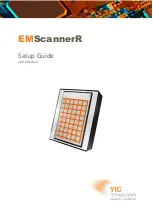
Explanation of the Fast Total Jitter Measurement
The Fast Total Jitter measurement is an optimized method to determine
the total jitter for devices that generate a very low error density (BER
well below 10
-10
).
To
measure
(not estimate) the total jitter for a device with a BER of
10
-12
with conventional methods, one usually needs to compare more
than 10
12
bits for each sample point. To measure a full eye opening this
way with appropriate timely resolution takes time (maybe days or
weeks, depending on the data rate), and the probability of seeing one
or no error in 10
12
bits is not higher than 37percent.
If one would compare 10
13
bits for the same device, the probability of
seeing ten errors is even lower (12 %), but the probability of observing
no error is almost zero.
The Fast Total Jitter measurement implements a method that reduces
the measurement time considerably and provides a higher accuracy. It
is based on statistical and probability calculations.
The method was presented at the DesignCon 2005 and is described in
"Total Jitter Measurement at Low Probability Levels, using Optimized BERT Scan
Method"
, included as 5989-2933EN.pdf.
We will not go into the details but provide an introduction.
5
Advanced Analysis
178
Agilent J-BERT N4903 High-Performance Serial BERT
Содержание J-BERT N4903
Страница 1: ...S Agilent J BERT N4903 High Performance Serial BERT User Guide s Agilent Technologies...
Страница 68: ...2 Setting up Patterns 68 Agilent J BERT N4903 High Performance Serial BERT...
Страница 158: ...4 Setting up the Error Detector 158 Agilent J BERT N4903 High Performance Serial BERT...
Страница 314: ...6 Evaluating Results 314 Agilent J BERT N4903 High Performance Serial BERT...
Страница 374: ...7 Jitter Tolerance Tests 374 Agilent J BERT N4903 High Performance Serial BERT...
Страница 394: ...8 Solving Problems 394 Agilent J BERT N4903 High Performance Serial BERT...
Страница 434: ...Index 434 Agilent J BERT N4903 High Performance Serial BERT...
















































